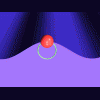The information in this monograph was reviewed by The Faculty at Harvard Medical School, with final editing approval by Natural Standard.
Scientific Review of "Guided Imagery" - Natural Standard reviewed more than 270 articles to prepare the professional monograph from which this version was created.
Some of the studies include:
Ackerman CJ, Turkoski B. Using guided imagery to reduce pain and anxiety. Home Healthc Nurse 2000;Sep, 18(8):524-530;quiz, 531.
Afari N, Eisenberg DM, Herrell R, et al. Use of alternative treatments by chronic fatigue syndrome discordant twins. 1096-2190 2000;Mar 21, 2(2):97-103.
Ahsen A. Imagery treatment of alcoholism and drug abuse: a new methodology for treatment and research. J Mental Imagery 1993;17(3-4):1-60.
Antall GF, Kresevic D. The use of guided imagery to manage pain in an elderly orthopaedic population. Orthop Nurs 2004;23(5):335-340.
Baider L, Peretz T, Hadani PE, et al. Psychological intervention in cancer patients: a randomized study. Gen Hosp Psychiatry 2001;Sep-Oct, 23(5):272-277.
Baird CL, Sands L. A pilot study of the effectiveness of guided imagery with progressive muscle relaxation to reduce chronic pain and mobility difficulties of osteoarthritis. Pain Manag Nurs 2004;5(3):97-104.
Ball TM, Shapiro DE, Monheim CJ, et al. A pilot study of the use of guided imagery for the treatment of recurrent abdominal pain in children. Clin Pediatr (Phila) 2003;Jul-Aug, 42(6):527-532.
Barak N, Ishai R, Lev-Ran E. [Biofeedback treatment of irritable bowel syndrome]. Harefuah 1999;Aug, 137(3-4):105-107, 175.
Baumann RJ. Behavioral treatment of migraine in children and adolescents. Paediatr Drugs 2002;4(9):555-561.
Brown-Saltzman K. Replenishing the spirit by meditative prayer and guided imagery. Semin Oncol Nurs 1997;Nov, 13(4):255-259.
Burke BK. Wellness in the healing ministry. Health Prog 1993;Sep, 74(7):34-37.
Burns DS. The effect of the bonny method of guided imagery and music on the mood and life quality of cancer patients. J Music Ther 2001;Spring, 38(1):51-65.
Castes M, Hagel I, Palenque M, et al. Immunological changes associated with clnical improvement of asthmatic children subjected to psychosocial intervention. Brain Behav Immun 1999;Mar, 13(1):1-13.
Collins JA, Rice VH. Effects of relaxation intervention in phase II cardiac rehabilitation: replication and extension. Heart Lung 1997;Jan-Feb, 26(1):31-44.
Crow S, Banks D. Guided imagery: a tool to guide the way for the nursing home patient. Adv Mind Body Med 2004;20(4):4-7.
Dennis CL. Preventing postpartum depression: part II. A critical review of nonbiological interventions. Can J Psychiatry 2004;49(8):526-538.
Esplen MJ, Garfinkel PE. Guided imagery treatment to promote self-soothing in bulimia nervosa: a theoretical rationale. J Psychother Pract Res 1998;Spring, 7(2):102-118.
Esplen MJ, Garfinkel PE, Olmsted M, et al. A randomized controlled trial of guided imagery in bulimia nervosa. Psychol Med 1998;Nov, 28(6):1347-1357.
Fors EA, Sexton H, Gotestam KG. The effect of guided imagery and amitriptyline on daily fibromyalgia pain: a prospective, randomized, controlled trial. J Psychiatr Res 2002;May-Jun, 36(3):179-187.
Gaston-Johansson F, Fall-Dickson JM, Nanda J, et al. The effectiveness of the comprehensive coping strategy program on clinical outcomes in breast cancer autologous bone marrow transplantation. Cancer Nurs 2000;Aug, 23(4):227-285.
Gimbel MA. Yoga, meditation, and imagery: clinical applications. Nurse Pract Forum 1998;Dec, 9(4):243-255.
Groer M, Ohnesorge C. Menstrual-cycle lengthening and reduction in premenstrual distress through guided imagery. J Holist Nurs 1993;11(3):286-294.
Gruzelier JH. A review of the impact of hypnosis, relaxation, guided imagery and individual differences on aspects of immunity and health. Stress 2002;Jun, 5(2):147-163.
Halpin LS, Speir AM, CapoBianco P, et al. Guided imagery in cardiac surgery. Outcomes Manag 2002;Jul-Sep, 6(3):132-137.
Hernandez NE, Kolb S. Effects of relaxation on anxiety in primary caregivers of chronically ill children. Pediatr Nurs 1998;Jan-Feb, 24(1):51-56.
Hewson-Bower B, Drummond PD. Psychological treatment for recurrent symptoms of colds and flu in children. J Psychosom Res 2001;Jul, 51(1):369-377.
Holden-Lund C. Effects of relaxation with guided imagery on surgical stress and wound healing. Res Nurs Health 1988;Aug, 11(4):235-244.
Hosaka T, Sugiyama Y, Tokuda Y, et al. Persistent effects of a structured psychiatric intervention on breast cancer patients' emotions. Psychiatric Clin Neurosci 2000;Oct, 54(5):559-563.
Hudetz JA, Hudetz AG, Klayman J. Relationship between relaxation by guided imagery and performance of working memory. Psychol Rep 2000;Feb, 86(1):15-20.
Hudetz JA, Hudetz AG, Reddy DM. Effect of relaxation on working memory and the Bispectral Index of the EEG. Psychol Rep 2004;95(1):53-70.
Ilacqua GE. Migraine headaches: coping efficacy of guided imagery training. Headache 1994;Feb, 34(2):99-102.
Johnstone S. Guided imagery: a strategy for improving relationships and human interactions. Aust J Holist Nurs 2000;Apr, 7(1):36-40.
Kaluza G, Strempel I. Effects of self-relaxation methods and visual imagery on IOP in patients with open-angle glaucoma. Ophthalmologica 1995;209(3):122-128.
Klaus L, Beniaminovitz A, Choi L, et al. Pilot study of guided imagery use in patients with severe heart failure. Am J Cardiol 2000;86(1):101-104.
Kolcaba K, Fox C. The effects of guided imagery on comfort of women with early stage breast cancer undergoing radiation therapy. Oncol Nurs Forum 1999;26(1):67-72.
Kvale JK, Romick P. Using imagery for role transition of midwifery students. J Midwifery Womens Health 2000;Jul-Aug, 45(4):337-342.
Kwekkeboom KL, Kneip J, Pearson L. A pilot study to predict success with guided imagery for cancer pain. Pain Manag Nurs 2003;4(3):112-123.
Lambert SA. The effects of hypnosis/guided imagery on the postoperative course of children. J Dev Behav Pediatr 1996;Oct, 17(5):307-310.
Laurion S, Fetzer SJ. The effect of two nursing interventions on the postoperative outcomes of gynecologic laparascopic patients. J Perianesth Nurs 2003;Aug, 18(4):254-261.
Lecky C. Are relaxation techniques effective in relief of chronic pain? Work. 1999;13(3):249-256.
Lewandowski WA. Patterning of pain and power with guided imagery. Nurs Sci Q 2004;17(3):233-241.
Louie SW. The effects of guided imagery relaxation in people with COPD. Occup Ther Int 2004;11(3):145-159.
Maguire BL. The effects of imagery on attitudes and moods in multiple sclerosis patients. Altern Ther Health Med 1996;2(5):75-79.
Mannix LK, Chandurkar RS, Rybicki LA, et al. Effect of guided imagery on quality of life for patients with chronic tension-type headache. Headache 1999;39(5):326-334.
Manyande A, Berg S, Gettins D, et al. Preoperative rehearsal of active coping imagery influences subjective and hormonal responses to abdominal surgery. Psychosom Med 1995;Mar-Apr, 57(2):177-182.
Marks IM, O'Dwyer AM, Meehan O, et al. Subjective imagery in obsessive-compulsive disorder before and after exposure therapy: pilot randomised controlled trial. Br J Psychiatry 2000;176:387-391.
Marr J. The use of the Bonny Method of Guided Imagery and Music in spiritual growth. J Pastoral Care 2001;Winter, 55(4):397-406.
McKinney CH, Antoni MH, Kumar M, et al. Effects of guided imagery and music (GIM) therapy on mood and cortisol in healthy adults. Health Psychol 1997;Jul, 16(4):390-400.
Mehl-Madrona L. Complementary medicine treatment of uterine fibroids: a pilot study. Altern Ther Health Med 2002;Mar-Apr, 8(2):34-6, 38-40, 42, 44-46.
Moody LE, Fraser M, Yarandi H. Effects of guided imagery in patients with chronic bronchitis and emphysema. Clin Nurs Res 1993;2(4):478-486.
Moody LE, Webb M, Cheung R, et al. A focus group for caregivers of hospice patients with severe dyspnea. Am J Palliat Care 2004;21(2):121-130.
Moore RJ, Spiegel D. Uses of guided imagery for pain control by african-american and white women with metastatic breast cancer. 1096-2190 2000;Mar 21, 2(2):115-126.
Murray LL, Heather Ray A. A comparison of relaxation training an syntax stimulation for chronic nonfluent aphasia. J Commun Disord 2001;Jan-Apr, 34(1-2):87-113.
Norred CL. Minimizing preoperative anxiety with alternative caring-healing therapies. AORN J 2000;Nov, 72(5):838-840, 842-843.
Ott MJ. Imagine the possibilities: guided imagery with toddlers and pre-schoolers. Pediatr Nurs 1996;Jan-Feb, 22(1):34-38.
Peeke PM, Frishett S. The role of complementary and alternative therapies in women's mental health. Prim Care 2002;Mar, 29(1):183-197, viii.
Rees BL. An exploratory study of the effectiveness of a relaxation with guided imagery protocol. J Holist Nurs 1993;Sep, 11(3):271-276.
Rees BL. Effect of relaxation with guided imagery on anxiety, depression, and self-esteem in primiparas. J Holist Nurs 1995;Sep, 13(3):255-267.
Rosen RC, Lewin DS, Goldberg L, et al. Psychophysiological insomnia: combined effects of pharmacotherapy and relaxation-based treatments. 1389-9457 2000;Oct 1, 1(4):279-288.
Rossman ML. Interactive Guided Imagery as a way to access patient strengths during cancer treatment. Integr Cancer Ther 2002;Jun, 1(2):162-165.
Rusy LM, Weisman SJ. Complementary therapies for acute pediatric pain management. Pediatr Clin North Am 2000;Jun, 47(3):589-599.
Sloman R. Relaxation and imagery for anxiety and depression control in community patients with advanced cancer. Cancer Nurs 2002;Dec, 25(6):432-435.
Sloman R. Relaxation and the relief of cancer pain. Nurs Clin North Am 1995;Dec, 30(4):697-709.
Speck BJ. The effect of guided imagery upon first semester nursing students performing their first injections. J Nurs Educ 1990;Oct, 29(8):346-350.
Spiegel D, Moore R. Imagery and hypnosis in the treatment of cancer patients. Oncology (Huntingt) 1997;Aug, 11(8):1179-1189; discussion, 1189-1195.
Stevensen C . Non-pharmacological aspects of acute pain management. Complement Ther Nurs Midwifery 1995;Jun, 1(3):77-84.
Thompson MB, Coppens NM. The effects of guided imagery on anxiety levels and movement of clients undergoing magnetic resonance imaging. Holist Nurs Pract 1994;Jan, 8(2):59-69.
Troesch LM, Rodehaver CB, Delaney EA, et al. The influence of guided imagery on chemotherapy-related nausea and vomiting. Oncol Nurs Forum 1993;20(8):1179-1185.
Turkoski B, Lance B. The use of guided imagery with anticipatory grief. Home Healthc Nurse 1996;Nov, 14(11):878-888.
Tusek D, Church JM, Fazio VW. Guided imagery as a coping strategy for perioperative patients. AORN J 1997;Oct, 66(4):644-649.
Tusek DL, Church JM, Strong SA, et al. Guided imagery: a significant advance in the care of patients undergoing elective colorectal surgery. this Colon Rectum 1997;40(2):172-178.
Tusek DL, Cwynar RE. Strategies for implementing a guided imagery program to enhance patient experience. AACN Clin Issues 2000;Feb, 11(1):68-76.
Wachelka D, Katz RC. Reducing test anxiety and improving academic self-esteem in high school and college students with learning disabilities. J Behav Ther Exp Psychiatry 1999;Sep, 30(3):191-198.
Walco GA, Ilowite NT. Cognitive-behavioral intervention for juvenile primary fibromyalgia syndrome. J Rheumatol 1992;Oct, 19(10):1617-1619.
Walco GA, Varni JW, Ilowite NT. Cognitive-behavioral pain management in children with juvenile rheumatoid arthritis. Pediatrics 1992;Jun, 89(6 Pt 1):1075-1079.
Walker JA. Emotional and psychological preoperative preparation in adults. Br J Nurs 2002;Apr 25-May 8, 11(8):567-575.
Walker LG, Heys SD, Walker MB, et al. Psychological factors can predict the response to primary chemotherapy in patients with locally advanced breast cancer. Eur J Cancer 1999;Dec, 35(13):1783-1788.
Weber S. The effects of relaxation exercises on anxiety levels in psychiatric inpatients. J Holist Nurs 1996;Sep, 14(3):196-205.
Wichowski HC, Kubsch SM. Increasing diabetic self-care through guided imagery. Complement Ther Nurs Midwifery 1999;Dec, 5(6):159-163.
Wills L, Garcia J. Parasomnias: epidemiology and management. CNS Drugs 2002;16(12):803-810.
Wynd CA. Personal power imagery and relaxation techniques used in smoking cessation programs. Am J Health Promot 1992;6(3):184-189.
Yip KS. The relief of a caregiver's burden through guided imagery, role-playing, humor, and paradoxical intervention. Am J Psychother 2003;57(1):109-121.
Zachariae R, Oster H, Bjerring P, et al. Effects of psychologic intervention on psoriasis: a preliminary report. J Am Acad Dermatol 1996;Jun, 34(6):1008-1015.
Evidence
Many more I could list .... but, you get the idea.
Best to all, C.C.
Edited by calmcookie, 15 July 2007 - 05:29 PM.
















